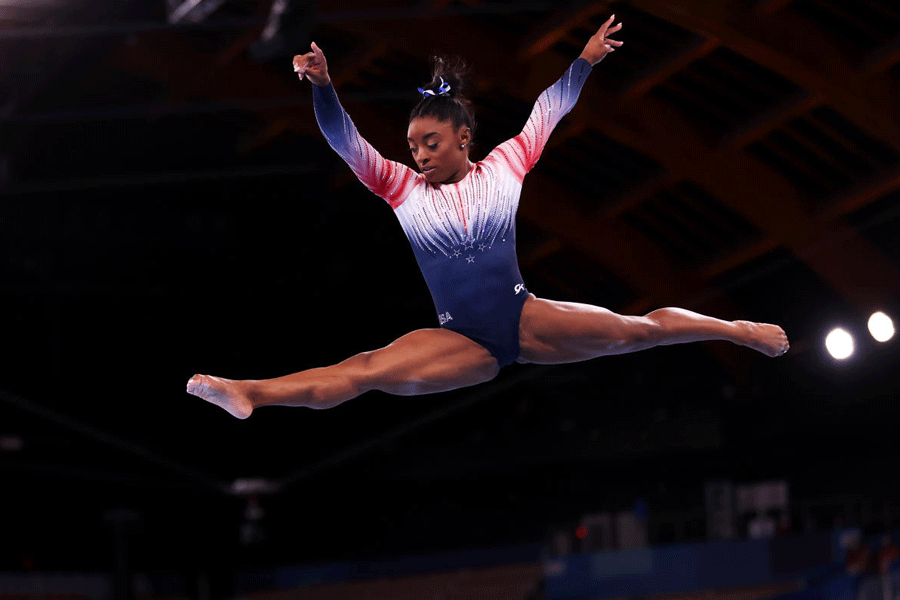For years in gymnastics, the phrase “the twisties” was usually uttered in hushed tones, as if saying the slang term for an athlete’s sudden loss of air awareness during a routine would only deepen the problem.
“It’s almost like a mythical kind of thing,” longtime Oklahoma men’s gymnastics coach Mark Williams said. “When someone says the ‘twisties’, everyone shudders because it’s bad.”
Then Simone Biles said it in front of the whole world two summers ago in Tokyo, after a sudden onset of the condition in the 2020 Olympics forced the sport’s biggest star to pull out of several competitions.
Biles returned to win bronze on the balance beam while doing a slightly altered routine that removed any twisting elements. It was her seventh Olympic medal and she called the triumph sweet while also admitting the twisties hadn’t really disappeared. She and coach Cecile Landi had just found a way to work around them.
That won’t be an option on Saturday when Biles competes for the first time since Tokyo in the US Classic in Chicago.
The 26-year-old Biles is on the start list for all four events, including uneven bars, which she acknowledged on her Instagram Stories feed this week has been the most difficult discipline to return to “both mentally and physically” because the routines are essentially 45 seconds of uninterrupted flipping, floating and twisting from bar to bar.
Biles could decide at any time what she’s comfortable doing and not doing at this point, though the most decorated female gymnast of all time added “I’m fine. I’m twisting again. No worries. All is good.”
However, this weekend or the next 12 months in the run-up to the 2024 Paris Olympics — if it gets that far — goes, simply making it back to this point is a victory in itself.
Not everyone does.
A month or so after Biles raised the conversation about “the twisties” and the mental health issues associated with them, Gage Dyer was training in Oklahoma and eyeing a spot at the 2021 World Championships.
Solid performances at the 2021 Olympic trials had Dyer’s confidence soaring. Still, he knew he needed to ramp up the difficulty of his routines if he wanted to make it to worlds.
More twisting. More flipping. Elements that had come easy to him since he became a gymnast at 13, an unusually advanced age for someone to take up the sport.
By 2018, he was competing regularly at national meets. By the spring of 2021, he was an NCAA champion in multiple events. Then in the late summer, early fall of 2021, the basics he’d mastered so easily at a young age essentially vanished.
To this day, Dyer still isn’t sure what happened. All he knows is for years he could do a “full in” — a double backflip with a full twist mixed in — and then he couldn’t.
Dyer will be watching on Saturday night when Biles steps back into the spotlight. “She’s proving it that you can get back to a certain level and be able to compete,” Dyer said. “That it’s not the end of everything. There is a way back.”










